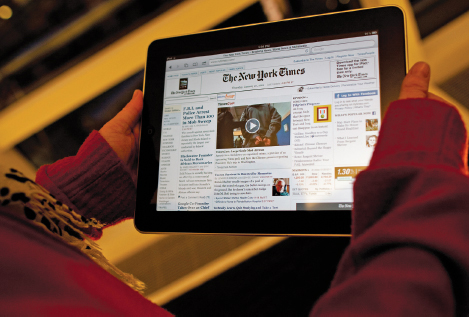“Objectivity” in Modern Journalism
Printed Page 69
Throughout the mid-1800s, the more a newspaper appeared not to take sides on its front pages, the more readers it could attract. Also at this time, wire service organizations were serving a variety of newspaper clients in different regions of the country. To satisfy all their clients, newspapers strived for impartiality—presenting “the facts” and leaving it up to readers to interpret the facts’ implications for their own lives.
Adolph Ochs and the New York Times
The ideal of an impartial, or purely informational, news model was reinvented by Adolph Ochs, who bought the New York Times in 1896. Through wise hiring, Ochs and his editors rebuilt the paper around substantial news coverage and provocative editorial pages. To distance the Times from the yellow press, the editors also downplayed sensational stories, favoring the documentation of major events or issues and developing a powerful marketing message touting the Times as the higher-brow choice.
With the Hearst and Pulitzer papers capturing the bulk of working- and middle-class readers, managers at the Times initially tried to use their straightforward, “no frills” reporting to appeal to more affluent and educated readers. In 1898, Ochs also lowered the paper’s price to a penny. Soon middle-class readers gravitated to the paper as a status marker for the educated and well-informed. Between 1898 and 1899, circulation soared from 25,000 to 75,000. By 1921, the Times had a daily circulation of 330,000 and a Sunday circulation of 500,000.
“Just the Facts, Please”
Early in the twentieth century, with reporters adopting a more “scientific” attitude to news- and fact-gathering, the ideal of objectivity took firmer hold in journalism. In objective journalism, which distinguishes factual reports from opinion columns, modern reporters strive to maintain a neutral attitude toward the issue or event they cover. They also search out competing points of view among the sources for a story, in an effort to provide balanced coverage.
The story form for packaging and presenting this kind of reporting has been traditionally labeled the inverted-pyramid style. Developed by Civil War cor-respondents,4 inverted pyramid reports were often stripped of adverbs and adjectives, and began—as they do today—with the most dramatic or newsworthy information. They answered the questions who, what, where, when (and, less frequently, why and how) at the top of the story and then narrowed the account down to its less significant details. This approach offered an important advantage: If wars or natural disasters disrupted the telegraph transmissions of these dispatches, at least readers would get the crucial information.
